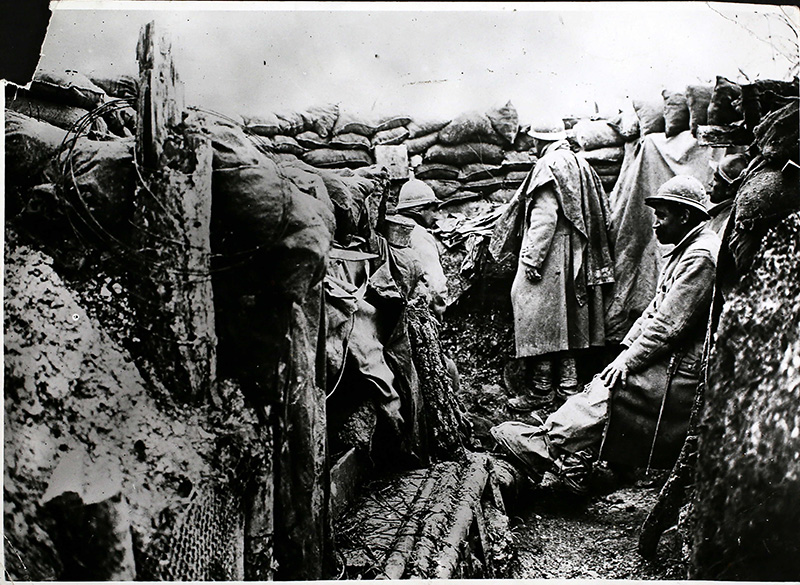Verdun was not a campaign that Germany entered into lightly. Designed to ‘bleed the French white’, the attack lasted an epic 10 months, and was the longest and second deadliest of the Great War. In fact, it took so much out of the German Army that, once it was over (with the Somme already behind them), the Germans avoided initiating any further Western Front offences for almost two years, until spring 1918.
The region surrounding Fort Douaumont was unusual in being simultaneously a stronghold and a weak point in France’s defences; although it was overlooked by a generous 19 forts and 40 redoubts, these were poorly equipped. The area’s defences had actually been scaled down in 1915, as an attack at Verdun had been pronounced to be an unlikely possibility. When it happened, though, France clung to the ground against the odds. Its ultimate loss would have severely dented the nation’s pride.
Before they went in with 100,000 troops, the Germans dropped a grand 1 million shells on the unfortunate city, flattening most of the existing defences. The army didn’t charge all at once, instead parties of Stormtroopers were sent in to deal with the remaining pockets of resistance using fearsome flame-throwers. Then, just four days later on 25th February, the troops took the fort without a shot being fired. The people of Germany rejoiced at this easy victory, and bells rang out throughout the land.
The French were not about to roll over and let Germany keep their fortress, though, they came back with just about everything they had. Cursing their mistake in leaving it largely defenceless in the first place, they shipped in masses of supplies – supposedly a supply cart arrived in the area every 14 seconds – and the bulk of their army. This had a knock-on effect throughout the Western Front. The Battle of the Somme had actually been intended to kick off in August 1916 at the very earliest, with generous French support, but was hurried forward to July since Britain was warned that, if they waited too long, there might be no French Army left! In the end the British helped France out by drawing a large chunk of the German focus away from Verdun, giving their opponents a much-needed break.

It later transpired that the German government’s aim in the campaign was not to take over Verdun, which they felt would be impossible in the long-run, but to grind the French down by forcing them to throw everything they had at the region. It worked, but the ferocity of the French retaliation forced Germany to commit nearly as many resources of its own.
Over 1,400 field guns, 32 million rounds of ammunition, 150 aircraft, 4 airships and several artillery balloons were devoted to the campaign, and the German Army amassed 330,000 casualties, about 143,000 of whom were killed. France, meanwhile, reported 351,000 casualties, including 56,000 confirmed dead, with 100,000 missing and presumed dead. About 130,000 of those lost, from both sides, were never identified and lie in Verdun still. Many villages and woods in the area were so mangled that they never recovered. It was a devastating fight all round, and that is without considering the extra months’ worth of casualties sustained at the Somme.
In the end, France did recover Fort Douaumont, but took 8 full months to do so. The remaining 2 months was spent trying to drive the Germans back to their previous position, in which aim they only partially succeeded. So, there were not even a lot of gains for either side. It can only be hoped that the scale of the devastation, in deterring either side from further skirmishes of the sort, saved as many lives in the long run as were lost in those 10 bloody months.

